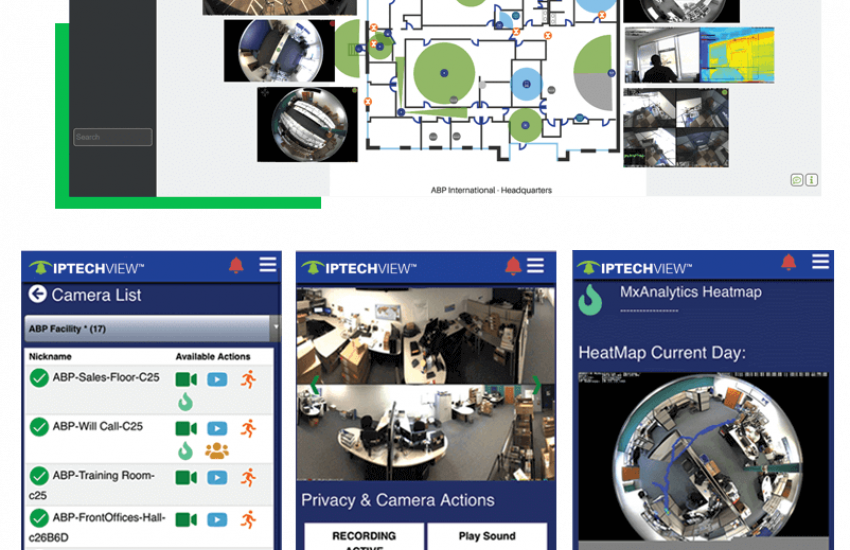The Nitty-Gritty of Remote Video Surveillance Systems
The Nitty-Gritty of Remote Video Surveillance Systems
A remote video surveillance system makes way for real-time monitoring and prevents suspicious activities. All you need for remote surveillance is a digital screen.
It could be your phone, laptop, tablet, or even a Samsung fridge. Just pasting the IP address onto the search bar allows you to get access to video footage from any corner of the world. The IT goblins call it port forwarding with Dynamic DNS.
Another thing you can do is to just log into the app of your security camera. You can achieve remote surveillance through analog CCTV cameras or digital IP cameras. Most people go for IP cameras nowadays because they are infamous for their advanced capabilities.
How Does a Remote Video Surveillance System Work?

Remote viewing can be enabled in many ways. The type of configuration you're going to use depends on your needs. You can choose from a variety of options, such as–
- Port Forwarding: Port forwarding is one of the best features of IP cameras. It directly forwards data from your business router to your private web. Since every camera comes with its own unique IP address, tracking your feeds becomes much easier. All you have to do is copy and paste the IP address into the search bar, and you are set.
- DDNS: DDNS allows you to configure your system in a way that it can detect motion. It will ping your phone to notify you of any sort of movement in your business or home. Additionally, DDNS associates a website name with your network's public IP address, enabling remote access even when the address changes.
- Special Plug-and-play Solutions: Many security cameras provide mobile apps and cloud services. You can just log into your account and go through everything. This doesn't require any additional configuration. You could try our IPTECHVIEW-Ready switches, and you don't even have to commit! Because they come with a 30-day trial.
Benefits of Remote Video Surveillance
Remote video surveillance offers a myriad of benefits like:
Cutting Maintenance Fee
When professional video monitoring services back up surveillance cameras, the camera becomes an omnipresent security guard.
Having an IP camera is much cheaper than hiring guards. And don't take cheap as a synonym for less effective. A monitored security camera never sleeps. It can stay on guard even in total darkness.
Reporting and Analyzing
A professional security camera can gather all the activities going on in your business. The built-in blue lights and sirens alert you whenever an intrusion is sensed at your site.
It can report any incident that takes place in your location. This way, you have the advantage of checking every nook and cranny of your site without worrying about missing something.
Analyzing Traffic Patterns
A top-notch business model includes keeping an eye on your demographic. You need to start analyzing how your customers browse your store and take measures to streamline it. By the grace of surveillance cameras, you can turn the footage into data.
This data will provide you with info about which section of your store is more popular and if that varies by day of the week. You will also learn about sections that are less popular and take measures to make them more eye-catching.
Applications and Uses
Some familiar AI dependent video analytics uses are given below:
Traffic management
Video analytics can detect traffic rule violations really easily, and traffic police are notified whenever the software detects lane departure, signal jumping, or overspending.
Surveillance cams can also detect traffic congestion. Meaning they can predict how long your trip might take. It can also identify unauthorized parking. And not to mention accident prevention and weather prediction. All in all, surveillance cameras greatly impact traffic patterns.
Retail
Retail stores are probably the biggest subscribers of surveillance cameras. Store owners use analytics to identify peak hours, staffing levels and to reduce waiting time. AI-powered systems are capable of looking for improvement. Retail stores mostly use dome cameras as their design and functionality work best indoors.
Day Care

Video monitoring is becoming more prevalent in daycare centers every day. Cameras allow parents to view their children from afar. These cameras are installed not only to monitor your children but also to monitor the people who take care of them. They can pick up even the tiniest bit of detail in a situation, like a child taking away another child's Lego blocks.
Equipment and Technology
Let's have a look at the tools you'll need to build your ideal infrastructure:
Types of cameras
Since we're talking about video surveillance, cameras are obviously a primary component. Some of the best options (according to us) are:
IP Cameras: These devices capture and send footage over an IP network. Their key features include high-definition footage and remote access.
PTZ Cameras: Pan-tilt-zoom cameras, as their name suggests, are extremely flexible and suitable for large spaces that require dynamic monitoring.
ANPR Cameras: Automatic number plate recognition cameras are another great option for surveillance in parking lots. It could be a restaurant parking lot, a gas station, or even a large spaced garage.
Fisheye Cameras: And then we have fisheye cameras. These devices offer a 360-degree view. They are designed for surveilling large spaces. For example, NASA used a 360° camera on their Curiosity Mars Rover. Fisheye cameras can reduce the amount of cameras needed to keep an eye on a vast area.
Network Infrastructure
An efficient infrastructure tries to layer the network devices to get the most out of them.
Routers: The main job of routers is to assist data packets to go through the right path. They do this with the help of IP addresses and routing tables. This process is a must-have for linking devices across multiple networks.
Switches: Switches help devices to link up within a specific part of the network. They are known as the Data Link Layer in the OSI model. They help your system avoid data traffic. This way, your system can function longer without disruption.
Broadband Connection: WAPs (not the Cardi B song) are really reliable in this case. Wireless Access Points help wired and wireless devices connect through Wi-Fi. This provides a much higher speed than traditional dial-up networks.
Frequently Asked Questions (FAQ)
What are the bandwidth requirements for remote monitoring?
The bandwidth requirement for live streaming footage is typically between 3 and 4 Mbps, but if you want HD-quality footage, you should keep it to a minimum of 5 to 8 Mbps.
Can remote surveillance systems integrate with existing security infrastructure?
Of course. You will only need to ensure that the access control and remote monitoring systems are compatible, and you're set!
Conclusion
The greatest benefit of a remote surveillance system is that it's user-friendly. It provides you with visual confirmation every time the system is updated, or any changes are made. This way, you don't have to worry about false alarms.
Video surveillance also saves you from liability. Imagine if a customer accidentally broke some eggs or spilled some milk and then tried to make it a case of mismanagement. You can protect yourself from those claims. Again, a running theme is that having video footage is not the only benefit that remote security provides.


